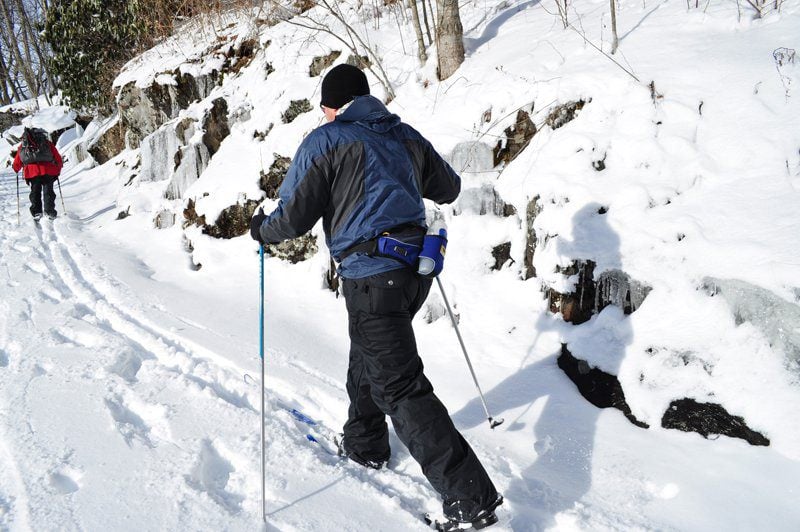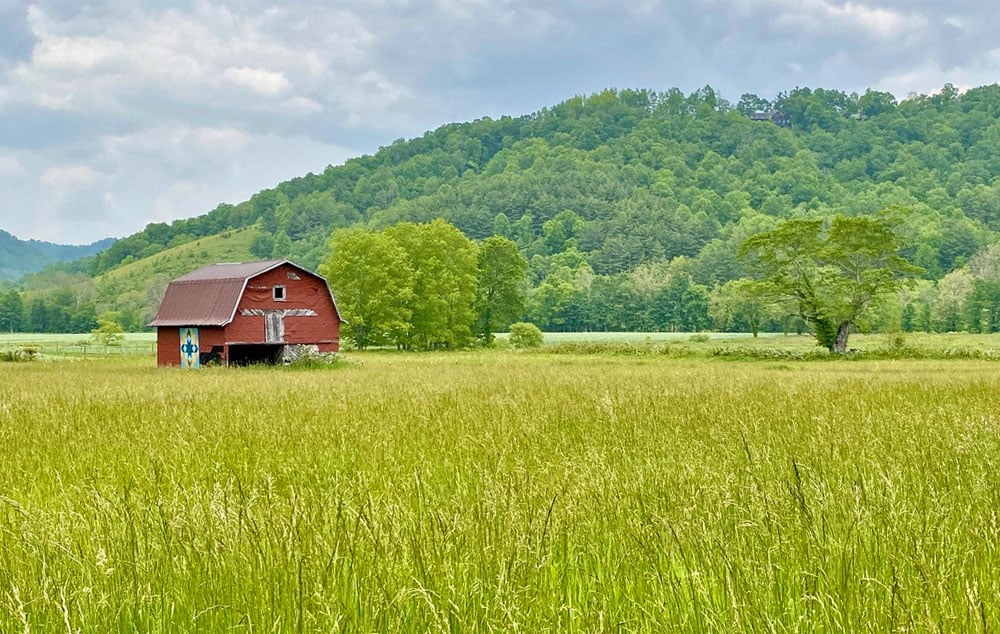Let's say that you take your dog on a walk every morning, year-round. During August in the North Carolina mountains the temperatures may reach 70 degrees, yesterday, on the other hand, it was 13 degrees. Typically, winter mornings in western North Carolina range from the 40s to near zero. During those walks, you don't necessarily need to be wearing more layers of clothing, but the weight of each piece will vary depending upon conditions.
A major factor taken into account while dressing for outdoor winter activities is what will the temperature range be while you are outside enjoying your activity? How you layer will drastically change if the temperatures are 40 degrees above zero versus 20 degrees below zero. Also, how you may layer will change if you are hiking in the mountains versus sitting still at a sporting event or in a hunting blind.
The second thing to consider is moisture management. If you are participating in an outdoor winter activity you will sweat and your clothing’s ability to move that moisture away from your skin, a process known as wicking, will determine how well you are able to stay comfortable in a variety of conditions.
Today’s modern outdoor fabrics do a wonderful job of wicking by not absorbing the moisture and allowing your natural body heat to push it away from your skin. The key to this is in the phrase modern outdoor fabrics. "Cotton kills" is a saying in the outdoor industry because cotton absorbs 27 times its weight in water and loses all ability to retain warmth when wet. So, when you perspire into cotton, it won’t wick the moisture away, and if you become wet from perspiration, rain, snow or falling into a creek, any cotton you are wearing will stay wet and cold.
The take-away here is to look for modern outdoor fabrics that have high wicking capabilities (you'll find great options from Polarmax, Patagonia, Icebreaker, and Smartwool). If you have questions, our outdoor staff can point you in the right direction.
So, let’s look at the layers
First is the base layer. It is the next-to-skin layer. This layer may range from your typical underclothing to wool or synthetic long underwear such as the Men’s Merino 150 Baselayer by Smartwool or Patagonia’s Women's Capilene Lightweight Bottoms. Again, the type of activity in which you are participating will determine the weight of the fabric that you choose, but for most applications, a good pair of lightweight longjohns will suffice. You can always wear a heavier mid layer over them.
Next comes the mid layer. The main purpose of the mid layer is insulation.
This layer can range from a lightweight pair of pants to ski pants to heavy mountaineering pants. The above-the-waist mid layer can mean a fleece vest or pullover fleece top in varying degrees of thickness. A good example is the men’s Kyanite Jacket by Arc'teryx and the women’s Layer Upward Half Zip from Columbia.
The final layer is the top layer, sometimes called a shell. Like its name implies, the shell is your first layer of protection against the elements. In some cases, you want your shell to be totally wind and water resistant but more often a little breathability is preferred. Fabrics such as GORE-TEX® found in the Apex Flex Jacket from The North Face or Patagonia’s waterproof, breathable H2No, found in the women's Torrentshell Jacket, do a great job of keeping the water out while remaining breathable.
Those are the basics for layering, but don’t be shy about asking our staff for advice. Taking in the huge variety of winter apparel can be overwhelming, but that just means that we probably have the perfect combination for your next winter adventure.


 Sign In
Sign In
 Go to My Account
Go to My Account Password Reset
Password Reset Email Preferences
Email Preferences Order History
Order History Address Book
Address Book Mailing List
Mailing List Wish List
Wish List Sign Out
Sign Out









 828-963-6511
828-963-6511 directions
directions Parking
Parking





























 history
history